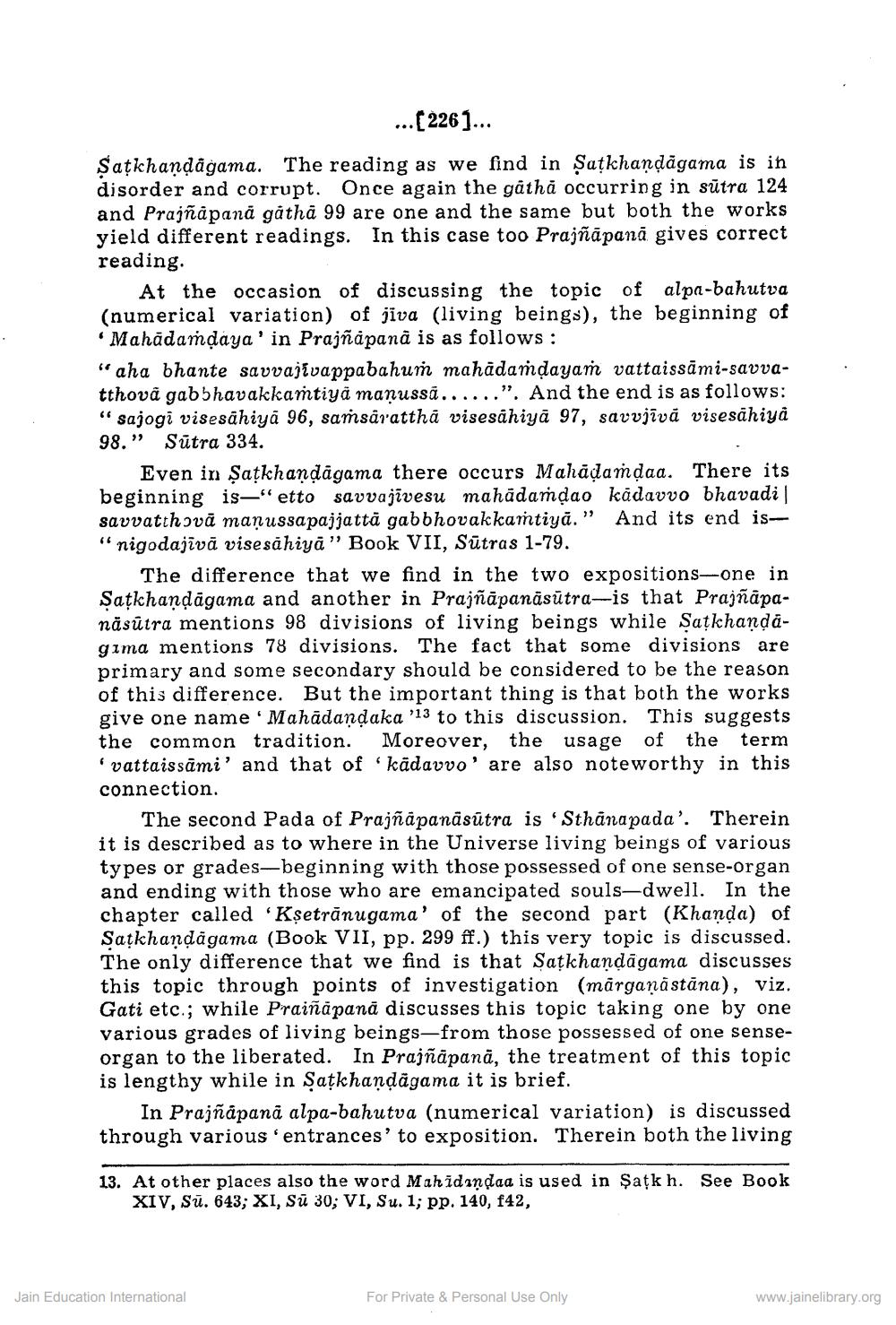________________
... ( 226 )...
Satkhandagama. The reading as we find in Satkhandāgama is in disorder and corrupt. Once again the gathă occurring in sūtra 124 and Prajñapanå gåtha 99 are one and the same but both the works yield different readings. In this case too Prajñāpanā gives correct reading.
At the occasion of discussing the topic of alpa-bahutva (numerical variation) of jiva (living beings), the beginning of Mahādamdaya' in Prajñapana is as follows: "aha bhante savvajivappabahum mahādamdayam vattaissāmi-savvatthovå gabbhavakkamtiya manussã......". And the end is as follows: " sajogi visesähiyā 96, samsáratthā visesähiyā 97, savvjīvā visesähiya 98." Sutra 334.
Even in Şatkhandagama there occurs Mahādamdaa. There its beginning is—"etto savvajīvesu mahädandao kādavvo bhavadi | savvatthová manussapajjattă gabbhovakkamtiyā.” And its end is“nigodajīvā visesähiyā" Book VII, Sūtras 1-79.
The difference that we find in the two expositions-one in Satkhamdagama and another in Prajñāpamāsutra-is that Prajapanäsutra mentions 98 divisions of living beings while Satkhandagima mentions 78 divisions. The fact that some divisions are primary and some secondary should be considered to be the reason of this difference. But the important thing is that both the works give one name 'Mahādandaka '13 to this discussion. This suggests the common tradition. Moreover, the usage of the term 'vattaissami' and that of 'kādavvo' are also noteworthy in this connection.
The second Pada of Prajñāpanāsūtra is 'Sthānapada'. Therein it is described as to where in the Universe living beings of various types or grades-beginning with those possessed of one sense-organ and ending with those who are emancipated souls-dwell. In the chapter called 'Kșetrānugama' of the second part (Khanda) of Satkhandägama (Book VII, pp. 299 ff.) this very topic is discussed. The only difference that we find is that Satkhandāgama discusses this topic through points of investigation (märgaņāstāna), viz. Gati etc.; while Praiñāpanā discusses this topic taking one by one various grades of living beings-from those possessed of one senseorgan to the liberated. In Prajñāpanā, the treatment of this topic is lengthy while in Satkhandāgama it is brief.
In Prajñāpanā alpa-bahutva (numerical variation) is discussed through various' entrances' to exposition. Therein both the living
13. At other places also the word Mahidandaa is used in Satkh. See Book
XIV, Su. 643; XI, Sū 30; VI, Su. 1; pp. 140, 142,
Jain Education International
For Private & Personal Use Only
www.jainelibrary.org




